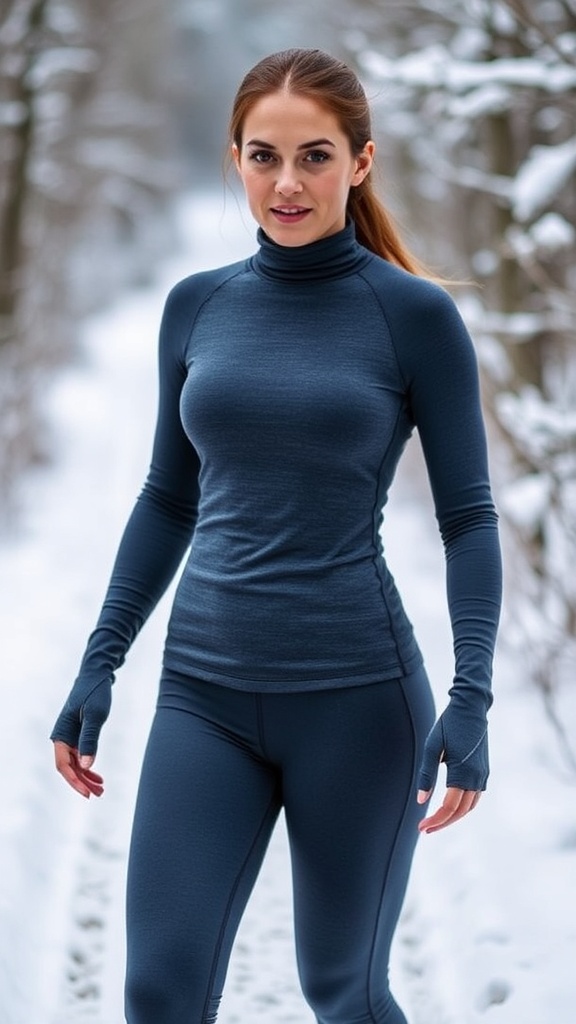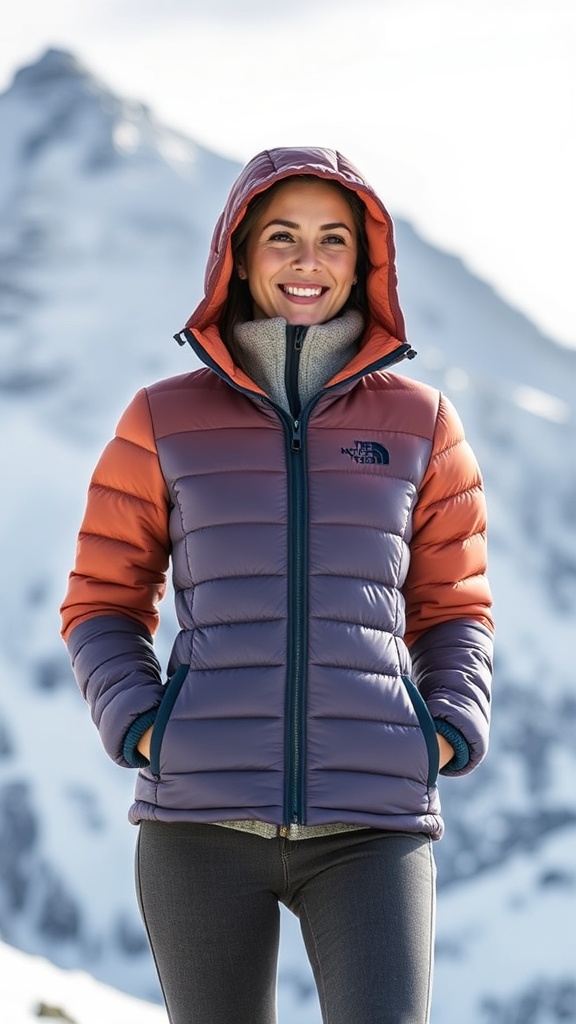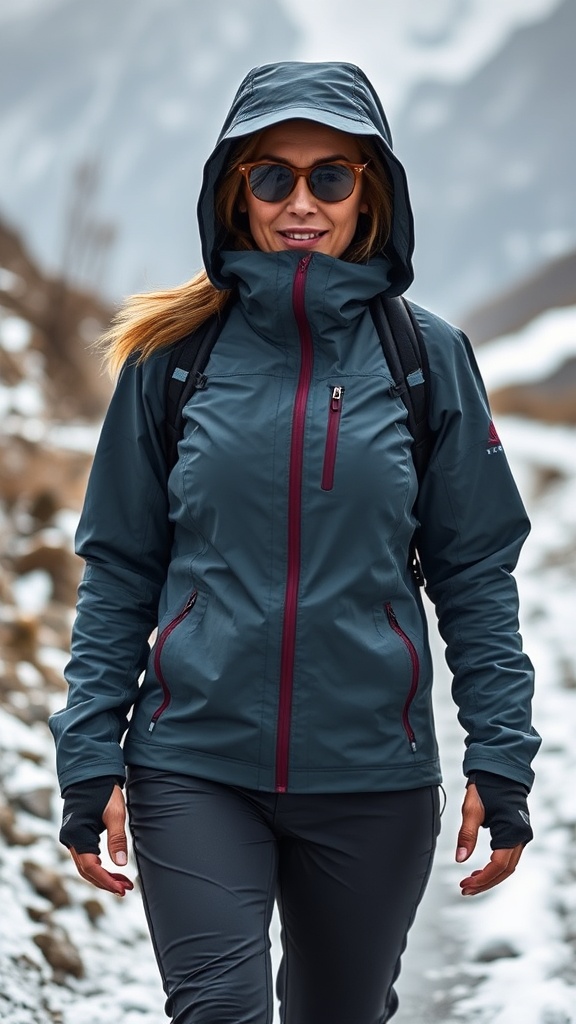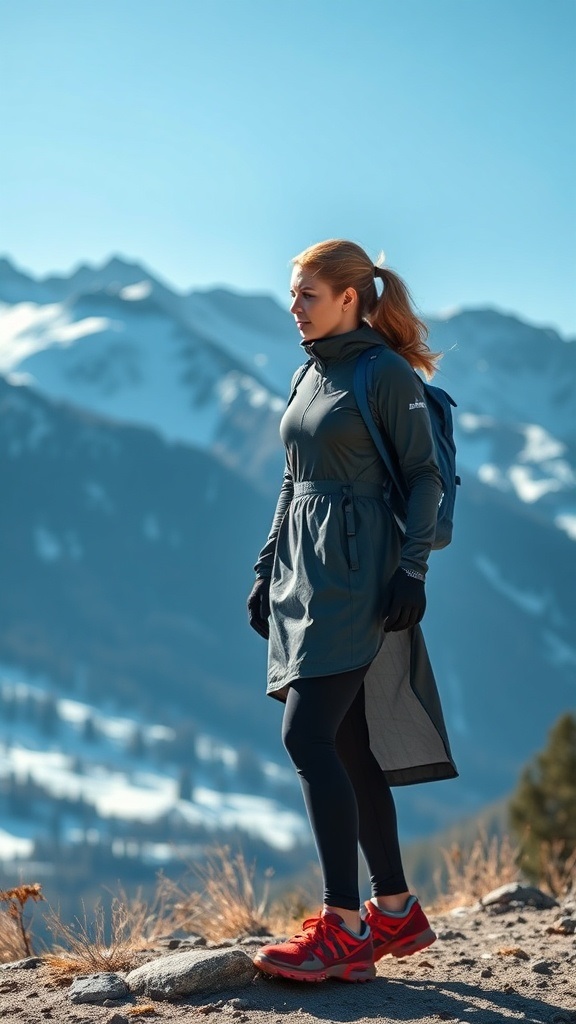Winter hiking presents a unique challenge that goes far beyond simply bundling up in whatever warm clothes you can find. The key to a successful cold-weather adventure lies in understanding that your outfit is essentially a carefully orchestrated system designed to keep you comfortable, dry, and mobile throughout your journey. Unlike summer hiking where a simple t-shirt and shorts might suffice, winter demands strategic thinking about layering, fabric choices, and the delicate balance between warmth and breathability.
The foundation of any great winter hiking outfit rests on three crucial principles: effective layering, smart fabric selection, and prioritizing comfort without sacrificing functionality. Layering allows you to adapt to changing conditions and activity levels throughout your hike, while proper fabric choices ensure moisture management and temperature regulation. Comfort, meanwhile, isn’t just about feeling good – it’s about maintaining the freedom of movement and temperature control that keeps you safe and enjoying your outdoor experience.
When temperatures drop and trails become icy, your clothing becomes your first line of defense against the elements. The right combination of base layers, insulating pieces, and protective outer shells can mean the difference between a memorable adventure and a miserable experience. Understanding how these elements work together will transform your winter hiking from an endurance test into an opportunity to truly embrace the season’s unique beauty.
Thermal Base Layers: The Foundation of Warmth
Every exceptional winter hiking outfit begins with high-quality thermal base layers that serve as your second skin throughout the adventure. The primary function of these foundational garments is moisture management – they must effectively wick perspiration away from your body while maintaining warmth even when damp. Merino wool stands out as the gold standard for base layers, offering natural odor resistance, excellent temperature regulation, and the ability to retain warmth even when wet.
Synthetic materials like polyester blends provide another excellent option, particularly for those with wool sensitivities or budget considerations. These materials excel at moisture-wicking and tend to dry more quickly than natural fibers. When selecting thermal tops, look for crew necks or mock turtlenecks that provide coverage without interfering with your mid-layers. The fit should be snug but not restrictive, allowing for full range of motion while maintaining contact with your skin for optimal moisture transfer.
For thermal bottoms, consider the length and rise carefully. Full-length thermals that extend to your ankles prevent gaps when layering with socks and boots, while a higher rise ensures coverage when bending or stretching. Flat-seam construction reduces chafing during long hikes, and thumb loops on long-sleeve tops help maintain sleeve position under additional layers. Investing in quality base layers pays dividends in comfort and performance throughout countless winter adventures.
Fleece Jackets and Pullovers
Fleece represents the perfect middle ground between warmth, breathability, and weight, making it an indispensable component of winter hiking wardrobes. Modern fleece technology has evolved significantly from the bulky options of previous decades, now offering lightweight alternatives that pack down small while providing exceptional insulation. Full-zip fleece jackets offer maximum versatility, allowing you to easily regulate temperature by opening or closing the front as conditions change.
Pullover fleeces, while less adjustable, often provide better wind resistance and can offer a more streamlined fit under outer layers. Look for fleeces with high-pile interiors for maximum warmth retention and smooth exterior faces that layer well under shells. Features like chest pockets provide convenient storage for small essentials, while longer back hems ensure coverage when bending or reaching.
Color choices in fleece can serve both aesthetic and practical purposes. Darker colors hide dirt and wear better over time, while lighter shades reflect heat and can help prevent overheating during intense activity. Many modern fleeces incorporate stretch panels or articulated construction for improved mobility, essential when navigating challenging terrain or scrambling over obstacles.
Insulated Puffer Jackets for Cold Adventures
Down and synthetic insulated jackets represent the heavy artillery of winter hiking warmth, providing crucial protection during rest stops, early morning starts, or when temperatures plummet unexpectedly. Down insulation offers the best warmth-to-weight ratio available, compressing into remarkably small package sizes while expanding to create exceptional loft and heat retention. However, down loses its insulating properties when wet, making synthetic alternatives attractive for damp conditions.
Modern synthetic insulations like PrimaLoft and Coreloft closely mimic down’s performance while maintaining effectiveness when wet. When choosing between down and synthetic, consider your typical hiking conditions and personal risk tolerance for moisture exposure. Look for jackets with baffle construction that prevents insulation migration and cold spots, and ensure adequate fill power ratings – 600-fill down or higher provides good performance for most winter hiking scenarios.
Packability becomes crucial when space and weight matter. Many puffer jackets stuff into their own pocket, creating a compact bundle perfect for stowing in your pack until needed. Features like adjustable hoods, elastic cuffs, and hem drawcords help seal in warmth, while interior pockets provide secure storage for valuables.
Wool Sweaters and Knitted Layers
Traditional wool sweaters bring timeless style to winter hiking while offering proven performance benefits that have kept outdoor enthusiasts warm for generations. Merino wool sweaters provide natural temperature regulation, moisture management, and odor resistance that synthetic alternatives struggle to match. The natural crimp in wool fibers creates countless tiny air pockets that trap warm air while allowing moisture vapor to escape.
Cable-knit and textured wool sweaters offer additional warmth through increased surface area and air trapping, though they may be bulkier under outer layers. Smooth-knit options layer more easily while still providing excellent insulation properties. Wool’s natural elasticity ensures comfortable fit and freedom of movement, crucial for navigating varied terrain.
Caring for wool layers requires attention to washing instructions and proper storage, but quality wool garments can last decades with proper care. The investment in premium wool pieces pays dividends in longevity, performance, and the satisfaction of wearing materials that improve with age and use.
Windproof and Waterproof Outer Shells
Your outer shell serves as the final barrier between you and winter’s harsh elements, making it arguably the most critical component of your layering system. Windproof shells block heat-robbing air movement while allowing internal moisture to escape, essential for maintaining comfort during active pursuits. Waterproof shells add protection from precipitation, but must balance weather protection with breathability to prevent internal condensation.
Three-layer construction shells offer the most durability and weather protection, ideal for frequent use and harsh conditions. Two-layer shells provide good protection at lower weight and cost, suitable for occasional winter hikers. Look for features like fully sealed seams, adjustable hoods that accommodate helmets, and ventilation zippers that allow quick temperature regulation without removing layers.
Fit considerations for shells include room for multiple layers underneath while maintaining freedom of movement. Articulated construction and stretch panels enhance mobility, while longer cuts provide better coverage in dynamic positions. Pit zips and chest vents offer crucial temperature regulation options during high-output activities.
Thermal Leggings and Lined Pants
Lower body warmth and mobility require careful consideration of thermal leggings and insulated pants that provide protection without restricting movement. Thermal leggings serve as base layers for your legs, offering moisture management and warmth retention similar to upper body thermals. Look for flat-seam construction and gusseted crotches that prevent chafing and binding during long hikes.
Softshell pants provide wind and water resistance while maintaining breathability and stretch for unrestricted movement. Many incorporate DWR (Durable Water Repellent) treatments that shed light precipitation and snow. Insulated hiking pants add warmth for extremely cold conditions or lower activity levels, though they may be too warm for continuous high-output activities.
Fit considerations include length that accommodates various boot heights and gaiters, while avoiding excess material that can catch on vegetation or create cold spots. Reinforced knees and seat areas extend durability in high-wear zones, and multiple pocket options provide storage for trail essentials.
Winter Hiking Boots and Wool Socks
Proper footwear forms the foundation of any successful winter hiking outfit, requiring boots that provide warmth, traction, and weather protection while maintaining comfort over long distances. Insulated hiking boots with 200-400 grams of insulation suit most winter hiking conditions, while extreme cold may require 600+ gram insulation levels. Waterproof membranes like Gore-Tex keep feet dry while allowing moisture vapor to escape.
Traction becomes critical on icy and snowy trails, making aggressive lug patterns and potentially crampon compatibility important considerations. Boot height affects warmth and protection, with mid-cut boots offering ankle support and higher cuts providing additional weather protection and warmth.
Wool socks complete the foot warmth system, providing cushioning, moisture management, and insulation even when damp. Merino wool socks offer superior comfort and odor resistance, while wool-synthetic blends add durability. Proper sock thickness coordinates with boot fit – ensure adequate room for thicker winter socks without creating pressure points.
Gloves, Beanies, and Ear Warmers
Extremities lose heat rapidly in cold conditions, making proper hand and head coverage essential for comfort and safety. Layering principles apply to hand warmth as well – liner gloves provide base insulation and can function independently during high-dexterity tasks, while insulated gloves or mittens add warmth for cold conditions. Mittens generally provide more warmth than gloves by allowing fingers to share heat.
Waterproof outer gloves or mitts protect against snow and moisture while maintaining dexterity for gear manipulation. Look for features like wrist gaiters that seal gaps with jacket sleeves, and palm grip patterns that enhance pole and gear handling. Backup gloves provide crucial redundancy if primary gloves become wet or damaged.
Beanies and winter hats prevent significant heat loss through the head while providing comfort and style options. Merino wool and synthetic fleece offer excellent warmth-to-weight ratios, while wind-resistant outer materials add weather protection. Ear warmers provide targeted protection for exposed ears while maintaining peripheral hearing important for safety awareness.
Stylish Down Vests for Layering
Down vests occupy a unique position in winter layering systems, providing core warmth while maintaining arm mobility and reducing bulk. This combination makes them ideal for high-output activities where full jacket warmth isn’t needed but core temperature regulation remains important. Quality down vests pack extremely small, making them perfect for carrying as backup warmth or for changing conditions.
Synthetic insulated vests offer similar benefits with improved moisture resistance, though typically at slightly higher weight and bulk. Vest designs range from minimalist racing cuts to more casual styles with multiple pockets and features. Consider how the vest layers under your outer shell and over mid-layers to ensure proper fit and function.
Styling down vests creates opportunities for both function and fashion, with options ranging from technical outdoor cuts to more lifestyle-oriented designs that transition well from trail to town. Color coordination with other layers allows vests to serve as accent pieces while maintaining their practical function.
Hiking Dresses and Skorts with Leggings
Modern hiking dresses and skorts challenge traditional notions of winter outdoor wear while providing genuine functional benefits for many hikers. When paired with thermal leggings and appropriate layers, these garments offer comfort, freedom of movement, and personal style expression that resonates with many outdoor enthusiasts. Technical fabrics provide moisture management, stretch, and durability comparable to traditional hiking pants.
Layering thermal leggings or hiking tights under dresses and skorts creates effective winter combinations that allow temperature regulation and weather protection. Look for dresses with longer hemlines that provide adequate coverage and overlap with leggings, and consider wind-resistant fabrics for outer layers.
Practical considerations include pocket placement and capacity, length coordination with boots and gaiters, and fabric choices that resist snagging on vegetation. Many hiking dresses incorporate shorts or brief liners that add coverage and prevent chafing, essential features for active pursuits.
Color Coordination for Winter Hiking Outfits
Strategic color coordination enhances both the aesthetic appeal and practical function of winter hiking outfits while expressing personal style on the trails. Earthy neutrals like browns, greens, and grays blend naturally with winter landscapes while hiding dirt and wear that accumulates during outdoor adventures. These foundational colors coordinate easily with accent pieces and technical gear.
Bold accent colors serve both style and safety functions, improving visibility to other trail users while adding personal flair to outdoor ensembles. Bright colors in hats, gloves, or outer layers can aid in emergency situations while making strong style statements. Consider how colors work together across multiple layers and how they photograph against winter backgrounds.
Seasonal color palettes can reflect winter themes through cool blues, deep purples, and crisp whites, while warmer tones like oranges and reds provide striking contrast against snowy environments. Balance bold choices with neutral foundations to create cohesive looks that photograph well and express individual style preferences.
Practical Accessories: Backpacks, Scarves, and Gaiters
Completing winter hiking outfits requires attention to practical accessories that enhance function while contributing to overall style and comfort. Winter-specific backpacks accommodate additional gear volume required for cold-weather safety while providing features like external attachment points for snowshoes, poles, and wet items. Insulated hydration sleeves prevent water from freezing, while external pockets allow quick access to frequently needed items.
Neck gaiters and scarves bridge the gap between jackets and hats, preventing heat loss through often-overlooked neck areas. Lightweight merino wool or synthetic materials provide warmth without bulk, while wind-resistant outer fabrics add weather protection. Versatile designs can be configured multiple ways for different protection levels and comfort preferences.
Gaiters prevent snow and debris from entering boots while adding an extra layer of lower leg protection and warmth. Choose gaiters that coordinate with your boot height and pants length, ensuring proper overlap and weather sealing. Durable materials and reliable closures ensure long-term performance in challenging conditions.
Conclusion: Building Your Perfect Winter Hiking Wardrobe
Creating the ideal winter hiking wardrobe represents an exciting journey of discovery, experimentation, and personal expression that evolves with experience and changing preferences. The foundation lies in understanding layering principles, investing in quality base components, and gradually building a collection that serves your specific hiking style and regional conditions. Remember that the best winter hiking outfit is one that keeps you comfortable, safe, and confident while expressing your unique personality on the trails.
Success in winter hiking clothing comes from treating your wardrobe as a system rather than individual pieces, understanding how each component interacts with others to create effective protection and comfort. Start with proven basics like quality base layers and reliable outer shells, then expand your options with specialized pieces that address specific needs or preferences. Don’t hesitate to experiment with different combinations and approaches – what works perfectly for one hiker may not suit another’s needs or style.
Most importantly, embrace the learning process and enjoy the opportunity to explore winter’s unique beauty while dressed in gear that makes you feel prepared and confident. The investment in proper winter hiking clothing pays dividends in comfort, safety, and the pure joy of experiencing the outdoors throughout the year. Build your wardrobe thoughtfully, wear it with pride, and let it enable countless memorable adventures in winter’s magical landscapes.















